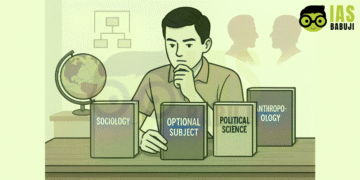Whoever is preparing for UPSC, knows the importance of history. Not to mention, it is one of the most popular subjects in the IAS exam. But, like other subjects, the IAS exam history syllabus is vast. That’s why aspirants have to take care of it. Thus, we have tried to gather UPSC History optional syllabus and History syllabus for UPSC Prelims in one place. In contrast, it will help them to understand the History optional question paper. So, without any delay, check out UPSC History Syllabus now.

Why Most Students Approach History?
I already said that it’s an important subject. But, ever wondered why? Firstly, it’s an easy subject to start. Secondly, it doesn’t have many technical theories. Thirdly, the syllabus of all exams overlaps with each other. On the contrary, it helps you to get a historic standout. Similarly, keep in mind, go for it if you have an interest in it. Otherwise, especially those chronological sequences will bother you. Hence, UPSC History optional syllabus will help to get through it. In addition, the aspirant will get to know History optional question paper too.
History Syllabus for IAS Exam
Before preparation, know the UPSC History syllabus very well. Thus, it will give you an in-depth idea about the subject. Besides, UPSC, it’s a crucial thing. Therefore, the syllabus well also helps to manage time. Also, IAS Exam history syllabus contains every bit of info. In fact, aspirants need to give an equal amount of time for every subject. Check out the History syllabus for UPSC Prelims below.
History Syllabus for Paper I
- Literary Sources: Greek, Chinese, and Arab writers (foreign). Literature in religion and regional languages. Primary and secondary indigenous. In addition, Scientific literature and poetry.
- Archaeological Sources: Numismatics, epigraphy, monuments, excavation, and exploration.
- Pre and Proto-history: Geographical factors (Paleolithic & Mesolithic) – gathering and hunting. Beginning of Agriculture (Neolithic & Chalcolithic).
- Indus Valley Civilization: Date of origin, characteristics. Extent, survival and significance, decline, architecture, and art during this time.
- Megalithic Culture: Development of agriculture and community life. Distribution of farming outside of Indus, Pottery, crafts, and iron industry.
- Aryans and Vedic Period: At last, the expansion of Aryans in India. Philosophic and religious literature during the Vedic period. Transformation of rig Vedic period to Vedic period. Social, political, & economical life, its significance. Verna and the monarchy system’s evolution.
After-Aryan Era
For instance, we know how the Aryan invasion changed Indian history. Hence, history syllabus for UPSC Prelims included it. So, have a look at what you have read.
- Periods of Mahajanapadas: Formation of mahajanapadas. Rise of the urban center, republic, and monarchies. Economic growth and trade routes. Beginning of coinage, expansion of Jainism and Buddhism. Rise of Nanda & Magadha. Macedonian & Iranian invasion and its after-effect.
- Mauryan Empire: Foundation of the empire. Chanakya, Arthashastra, and Chandragupta. Ashoka and his concept of dharma. Politics and economy; growth of art, sculpture, and literature during this era. Expansion of religion, the disintegration of the empire. Kanvas and Sungas.
- Post-Mauryan Era: Time of Sakas, Indo-Greeks, Kushanas, and Western Kshatrapas. Connection with the outside world, growth of the economy, and urbanization. Development of religion, social life & coinage. Improvements in art, literature, science, and culture.
- Early State and Society in Eastern, Deccan, and South Indian: The Satavahanas and Kharavela. Tamil states during Sangam age and administration. Trade guilds. Economy, and land grants. coinage, literature & culture in Sangam age. Art, architecture, and Buddhist center.
- Period of Guptas, Vakatakas, and Vardhanas: Economical conditions. Politics and administrations. Indian feudalism and the beginning of the caste system. The position of women in society. Coinage of Guptas & land grants. Development in the educational system – Nalanda, Vikramshila, and Vallabhi. Growth of literature, science, architecture, and art.
- The Regional States in Gupta Era: Chalukyas of Badami, Pallavas, and Kadambas. Trade guild. Growth of literature including Saiva and Vaisnava religion. Shankaracharya, Tamil Bhakti movement. Vedanta, temple architecture. Paramaras, Palas, Senas, and Rashtrakutas and its cultural aspects. Administration & politics. Later, Alberuni and Arab conquest in Sind. Pandyas, Hoysalas, Cholas, and the Chalukyas of Kalyana. Local government. Growth of sects, art, and literature. Development of Mathas, Agraharas, and temple institutions. Development of society, education, and economy afterward.

Beginning of Early Indian Culture
After Gupta period, Indian culture has changed later. Meanwhile, it was evolving. In fact, you need to read about it in UPSC history syllabus.
- Themes in Early Indian Culture: Major evolution in art and architecture. text and languages. Major ideas in science, Mathematics, and Philosophy.
- Early Medieval India (750-1200): Rise of Rajputs. Major political improvement in Northern Indian and Peninsula.The Cholas & administrations. Village and Agrarian economy, society, urban settlements. Position of women and new social order during this time. status of Brahmans. Commerce, trade, science, and technology.
- Cultural Traditions in India (750-1200): Philosophy. Ramanuj, Vishishtadvaita, Madhava, Shankaracharya. Vedanta and Brahma- Mimansa; religion. The arrival of Islam and Sufism; Growth of Tamil & Sanskrit literature. Development is Arts.
Sultanate Era
Needless to say what impact this era has on India. Additionally, we witnessed a mixed culture from then.
- The Thirteenth Century (Delhi Sultanate): Ghurian invasion and success; Establishment of Delhi Sultanate. Later, its effect on social, economical, and cultural life. Rules of Iltutmish and Balban.
- Khalji Revolution (The Fourteenth Century): Alauddin Khalji – territorial expansion, economy. Muhammad Tughlaq – Bureaucracy and major projects. Firuz Tughlaq – civil engineering, Ibn Battuta’s account, foreign contact.
- The Thirteenth and fourteenth Century (Culture, Society, and Economy): Condition of women. Then, slavery and the caste system. Persian literature and Sultanate architecture. Rise of trade and commerce. Development in agriculture and urban economy.
- The Fifteenth and Sixteenth Century (culture and Society): Development in politics and economy. Dynasties in Bengal, Kashmir, Gujarat, etc. The Mughal, Sur, and Vijayanagara Empire. Portuguese colonization. Cultural specifications in art and literature.
- Akbar and Mughal Empire in Seventeenth-Century (Culture): Relation with Rajputs. Religious and social evolution during this era. Jagir and Mansab System. Jahangir, Shahjahan, and Aurangzeb’s rule. Zamindar system. Shivaji and the Maratha Kingdom. Persian history, Classical music, Mughal architecture, and literature.
- The Sixteenth and Seventeenth Century (Economy and Society): Craft and agriculture production. A revolution in trade commerce. English companies, the banking system.
- The Eighteenth Century: Decline of the Mughal Empire. Peshwas and principalities in Bengal & Awadh. Later, the rise of Afgan and the Battle of Panipat. Starting with the British conquest.
Well, these are the UPSC history optional syllabus for the paper I. In fact, We make it detailed. So, you can easily understand the history syllabus for UPSC Prelims. It will help you to solve the History optional question paper. However, check out the UPSC History syllabus for paper II.

Syllabus for Paper II
- European Invasion Into India: Early settlements; East India Company and Portuguese colony. Meanwhile, the conflict between the Nawabs of Bengal and English. Battle of Plassey and its significance.
- British expansion and Its Early Structure in India: Battle of Buxar and three Anglo-Maratha wars, Mir Jafar; The Regulating Act in 1773, The Charter Act in 1883, and The Pitt’s India Act in 1884. Establishment of British colonial rule in India.
- Economic Impact, Social, and Cultural Development (British Raj): Ryotwari, Mahalwari, and land revenue settlements. Deindustrialization and commercialization of agriculture. The drain of wealth, economic transformation. Further development in education and the inclusion of western education. the rise of media and public opinion. Growth of science, literature, and missionary activities.
- Social Movements (Especially in Bengal): Iswarchandra Vidyasagar – Widow remarriage, Child marriage movement. Raja Ram Mohan Roy – Sati movement, Brahmo Samaj. Dayananda Saraswati – Young Bengal movement.
- Indian Response to British Rule and Birth of Indian Nationalism: Movements and tribal uprising. Kol, Santal Hul, and Munda Ulgulan Rebellion. the Great Revolt in 1857 and its consequences. Thus the rise of the Indian National Congress and Safety Valve Theory. Moderates and Extremists in Congress leadership. Partition of Bengal in 1905 and Swadeshi Movement. Beginning of extreme revolution.
- Mahatma Gandhi: Rowlatt Satyagraha and Khilafat movement. Non-cooperation movements and then the Civil disobedient movement. Simon Commission, Nehru Report, and table conferences. Working-class movement, Cripps mission, and Cabinet Mission; Quit India Movement.
- Constitutional Developments (1858-1935)
- Other Revolutionaries and Separation of Muslim League: Jawaharlal Nehru, Subhas Chandra Bose, and the Communist party. Afterward, the Congress Socialist Party. Hindu Mahasabha and partition. Finally, transfer of power and Independence.
- Nehru’s foreign policy and regional inequality. Then, the caste system and the Dalit movement. Progress in science. Reformation of politics and rural areas. Expansion of Marxian socialism.
World History
- Modern Politics: American and French revolution, followed by its aftermath. American civil war and Abraham Lincoln. Later, British Democratic Politics and parliament reformation.
- Industrialization, Imperialism, and Colonialism: Globalization and Industrialization – USA, Russia, Germany, and Japan. Meanwhile, the rise of neo-imperialism – South-east Asia, Latin America, South Africa, and Australia.
- Fascist revolution and the Chinese revolution in 1949.
- World Wars and its Aftermath: Causes and consequences of both world wars. Then, the establishment of UNO.
- Liberation from colonial rule – Bolivar, Egypt, and Vietnam. Democracy, decolonization in Latin America, and Africa.
- Foundation of NATO and unification of Europe.
- The collapse of Soviet Communism, political transformation in Europe, and finally the end of the Cold war.
Specifically, these are pretty much everything you need for the UPSC history syllabus. Therefore, you know that the IAS exam history syllabus is quite elaborated. But once you go through UPSC history optional syllabus, it’ll become easier. Meanwhile, you can also practice History optional question paper.
Also Read: Best History Books For UPSC – Ancient & Modern (IAS Exam)

You can also check about Test Series, Study Material, Question Paper & CSE Subjects which in details talk about Prelims Test Series, Indian Polity, Free Material for UPSC, 2019 Question Paper, UPSC Optional Subjects
FAQs That You Want to Know
Indeed, it has to be vast. Exams like IAS indeed require the full potential of an aspirant. And UPSC History optional syllabus covers both Indian and world history. For example, candidates should know about democracy.
Although, it is a dumb question to ask, the answer is yes. The more you practice, the more you get better. Keep practicing accordingly.
Of course, it is helpful. So, don’t try to skip any topic without reading thoroughly.
Editor’s Note | UPSC History Syllabus
Lastly, remember to control your schedule. Because there is not only History in the IAS exam but others too. Likewise, IAS exam history syllabus they are vast. Otherwise, you won’t get enough time to complete everything within time. However, we’ve tried to provide everything about the UPSC History optional syllabus here. In brief, you need to go through it carefully. Finally, all The Best for the exam. Hope this UPSC History syllabus will help in better preparation.




